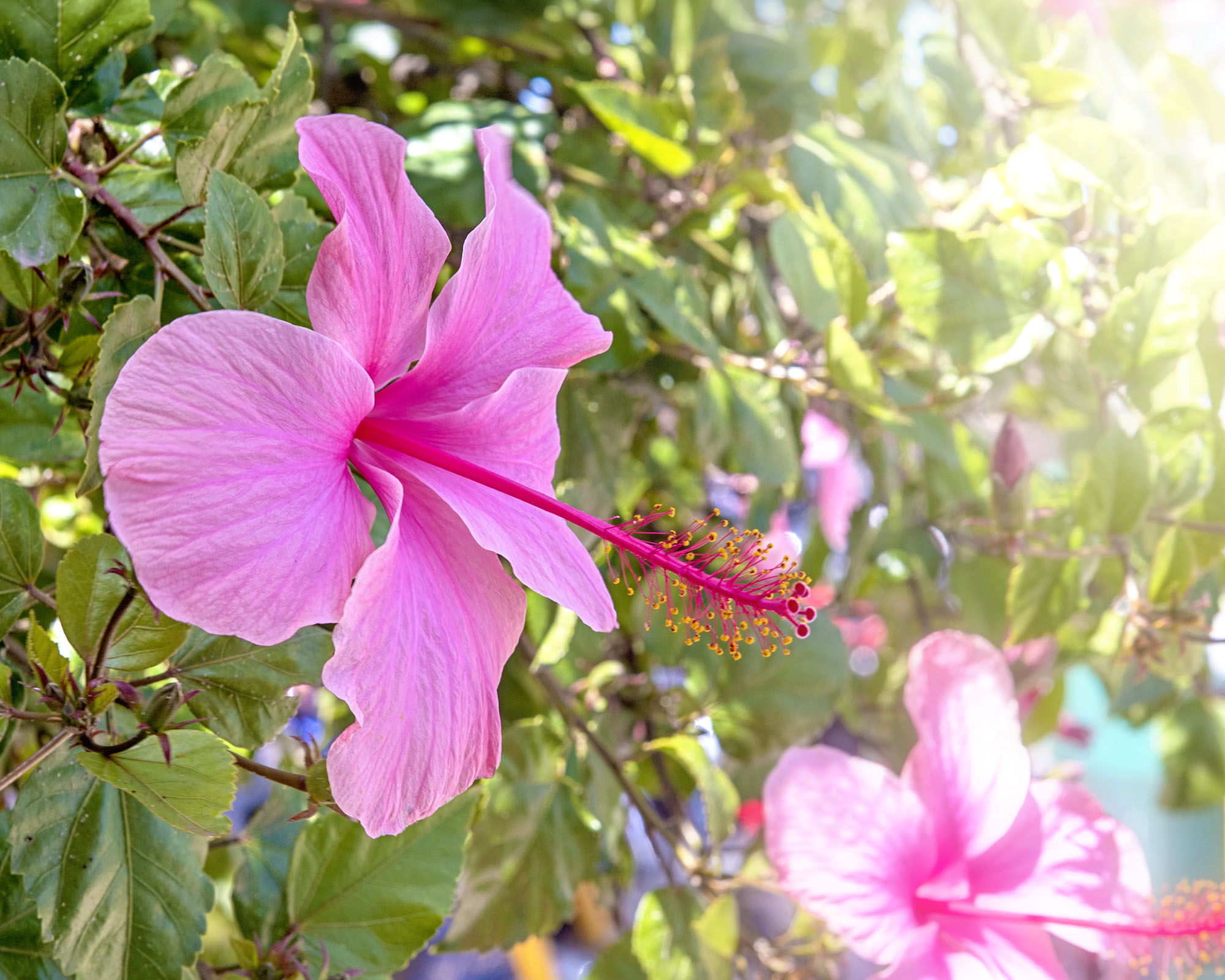Hibiscus Leaves Turning Yellow: Common Causes & Fixes
If you’re concerned about your hibiscus leaves turning yellow, there are some easy ways to diagnose what’s going wrong, and simple methods to fix it.

Caroline Bloomfield
Are Your Hibiscus Leaves Turning Yellow? Causes & Easy Fixes
We occasionally hear from gardeners whose hibiscus leaves are turning yellow. Growing hibiscus is a wonderful way to add a tropical feel and flair to almost any landscape, patio or indoor space. While hardy hibiscus varieties thrive in most gardens, frost-tender types can also be grown indoors in containers. It is easy to understand why the sudden yellowing of an otherwise healthy plant is a cause for concern. Below, we will explore some of the most common reasons that hibiscus leaves begin to change in appearance.
Why Are My Hibiscus Leaves Turning Yellow?
Several factors may be at play if your hibiscus leaves are turning yellow. In most instances, yellowing of a plant’s leaves occurs when cultural conditions are inadequate or the plant’s needs for growth have not been met. Sudden or rapid changes in the appearance of hibiscus foliage may also be caused by stress or damage that’s been done to the physical plant or its root system.
Common Causes for Yellow Leaves on Hibiscus
Yellowing of hibiscus leaves occurs most frequently when conditions are less than ideal, including inadequate levels of light and problems with soil moisture. Soils that are excessively dry or remain waterlogged for prolonged periods are most notable. Hibiscus appreciates soils that are rich in nutrients, so routine fertilization is important to keep the plants looking their best. Both indoor and outdoor hibiscus should be kept warm and protected from sudden or rapid drops in temperature.
Leaves yellowing or prematurely dropping from a hibiscus plant may also be caused by disease, pressure from insects, or damage done directly to the plant. Various foliar diseases will first manifest as chlorosis.
Take careful note of other potential symptoms to quickly diagnose and treat potential problems. Sap-sucking insects, like aphids or spider mites, may also cause yellowing of hibiscus leaves. These pests are generally not a serious concern to the plant’s health, except in severe cases.
Physical damage to hibiscus plants may result from transplanting, repotting, or extreme weather events.
How to Fix Yellow Leaves on Hibiscus
Identifying the problem will help you learn how to treat it. In most instances, yellowing caused by stress will remedy itself. This is often true of plants that have recently been moved to a new growing location or are in the process of adapting to a new space. Once proper conditions have been met, you can expect your hibiscus to begin to produce lush, healthy foliage again. Those affected by disease or insects require further treatment.
Gardening tips, videos, info and more delivered right to your inbox!
Sign up for the Gardening Know How newsletter today and receive a free copy of our e-book "How to Grow Delicious Tomatoes".
How to Prevent Hibiscus Leaves Turning Yellow
With a proactive approach, most hibiscus yellowing can be prevented. This includes providing consistent care and the use of proper garden maintenance techniques.
Weekly irrigation, pruning, and feeding are all essential to keeping hibiscus plants happy and healthy. Continue monitoring your plants’ foliage throughout the growing season to detect problems early before they have the opportunity to progress.
FREQUENTLY ASKED QUESTIONS
Should I Cut Off the Yellow Leaves on My Hibiscus?
Though most yellow leaves will drop from the plant on their own, the affected foliage should be removed. This will help to maintain the plant’s overall appearance, and may even be vital to controlling the spread of insects or disease. Once snipped, all plant matter and debris should be removed from the garden disposed of properly.
What Does an Overwatered Hibiscus Look Like?
Yellowing leaves are among the most common signs that a hibiscus has been overwatered. These plants may also begin to wilt. This is most frequently the result of soils with poor drainage or that remain waterlogged. Though established plants are usually able to recover from overwatering, excessive levels of soil moisture may lead to root rot and the loss of hibiscus plants.

Nikki Tilley has been gardening for nearly three decades. The former Senior Editor and Archivist of Gardening Know How, Nikki has also authored six gardening books.
- Caroline BloomfieldManager of Marketing Communications
-
 4 Superfast Composting Methods: Turn Waste Into Garden Gold In 30 Days Or Less
4 Superfast Composting Methods: Turn Waste Into Garden Gold In 30 Days Or LessTry the fastest composting methods to turbocharge your pile and transform kitchen scraps and garden waste into finished compost in just a few weeks.
By Mary Ellen Ellis
-
 Best Spider Plant Soil – Complete Soil Guide And Expert Tips For Keeping Plants Happy
Best Spider Plant Soil – Complete Soil Guide And Expert Tips For Keeping Plants HappySpider plants are fun and easy plants to grow, but what is the best soil for a spider plant? Selecting the right soil is important so they can thrive.
By Bonnie L. Grant
